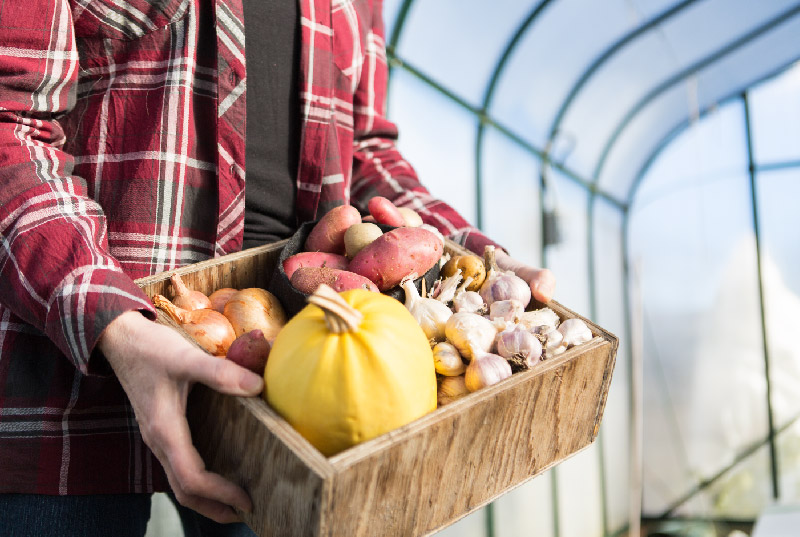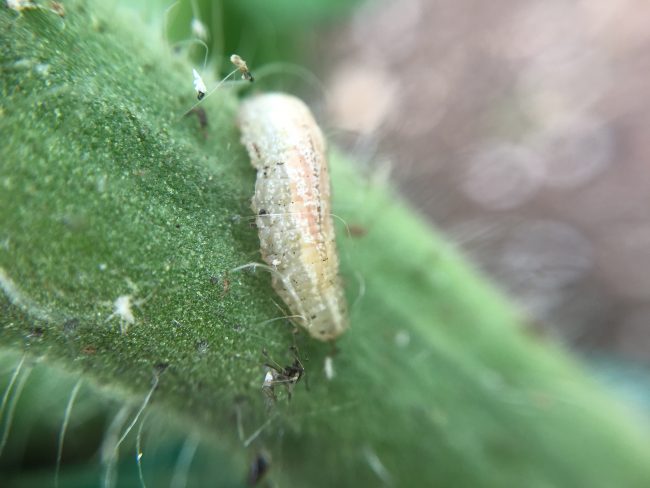
I help gardeners grow
& beginners blossom.
No seed left behind,
no soil unturned.
Together we can have lots of fun growing
great gardens using simple practical tips.
- Featured in -





Start saving & storing your garden seeds for a more more sustainable future
SIGN UP to get the FREE Seed packet PDF
X CLOSE

Grateful For Bugs
“ONE INDICATOR THAT SOIL IS GOING OUT OF BALANCE COMES WHEN SPECIES THAT ONCE GREW WELL NO LONGER DO,” says Steve Solomon in his book about growing nutrient-dense food.
But even in balanced soil you sometimes get a few bugs. Luckily for me I love bugs good and bad. But many gardeners at large only like good bugs. And they do everything in their power position to get rid of the bad guys. I had a neighbor once who hired a killer to eliminate all the young ladybugs on her tree because she thought they were pests. And this is not unusual. I encounter bug squeamish-ness among friends and family all the time.

Columbine with hover fly looking for pollen or a place to lay eggs. Photo by Donna Balzer
But sadly, If you only get “good bugs” in the garden you are missing the other half. The bugs the good ones need to eat to survive. I love hoverflies (seen approaching the columbine above) because they lay eggs among aphid populations and their hatching maggots eat hoards of aphids. The adults hoverflies know when and where the aphids appear. The small hovering “wasps” pollinate flowers and lay eggs when they find aphids. When the eggs hatch into maggots, they fill their tummies with yummy sugar-filled aphids.

Ladybug larva also eat aphids but are often mistaken for “bad guys” and sprayed off plants with soaps or more toxic chemicals. Photo by Donna Balzer.
So I ask the question. How can you love the good bugs and not the bad bugs? They are co-evolved. In my greenhouse I saw aphids recently. Well I actually saw the white skins aphids shed as they grow up. But the hoverflies were way ahead of me. They had already been there, laid eggs and hatched into hungry caterpillars…. well not exactly caterpillars. The immature part of a wasp is called a maggot. But in this case it is an aphid-eating maggot so I love it.

The maggot of the hoverfly is the voracious, big-eating immature stage. When you see these you can relax. Help is on the way.
If you see brown maggots on your tomatoes or nasturtiums or roses you know you won the big prize in the lottery of life today. Help has arrived and there is nothing more for you to do. Just sit back and relax and be grateful for bugs because the good ones have arrived to help. Let them do their job and the garden will be good to go. Now get back to work focussing, as Steve Solomon suggests, on balancing your soils for healthier crops. Balanced soils equal health for gardeners eating the produce.
Donna Balzer is the Brand Ambassador for BCGreenhouse Builders and she has two greenhouses in her big backyard.

What Would Donna Do?
Get my growing and gardening tips and pointers throughout the season.
















0 Comments